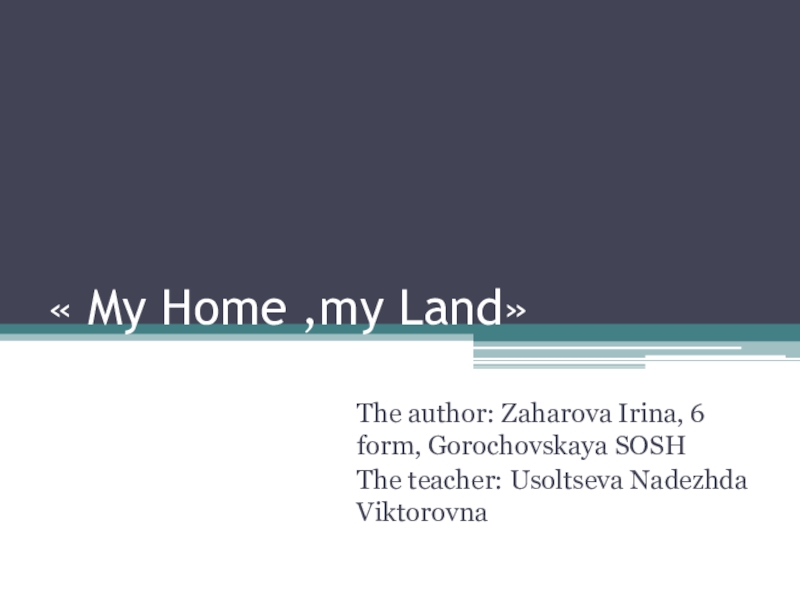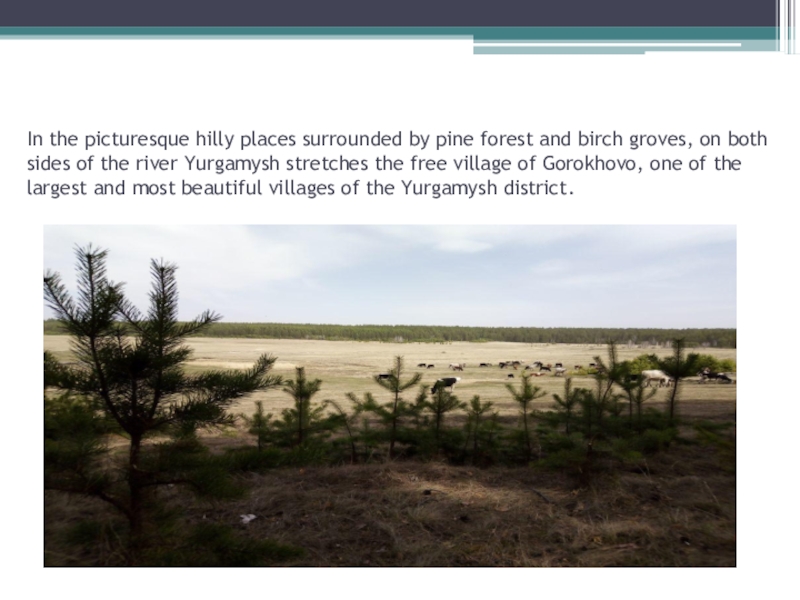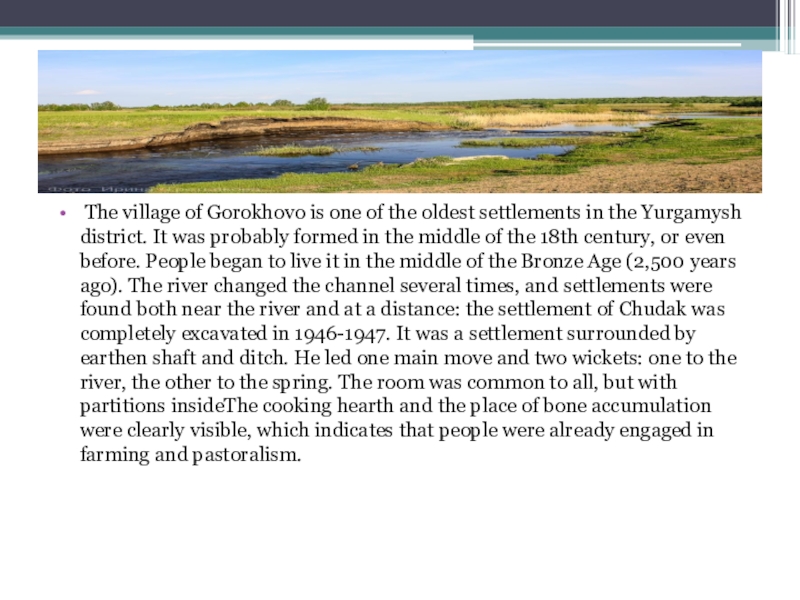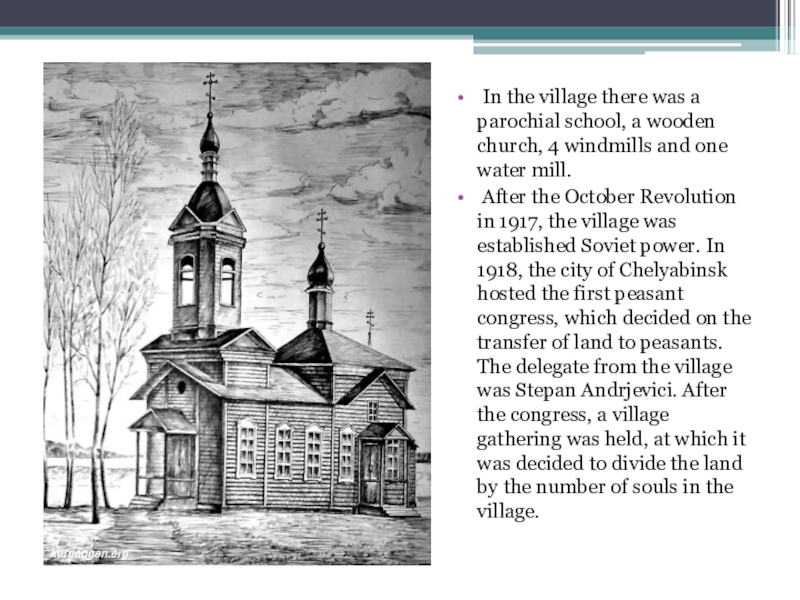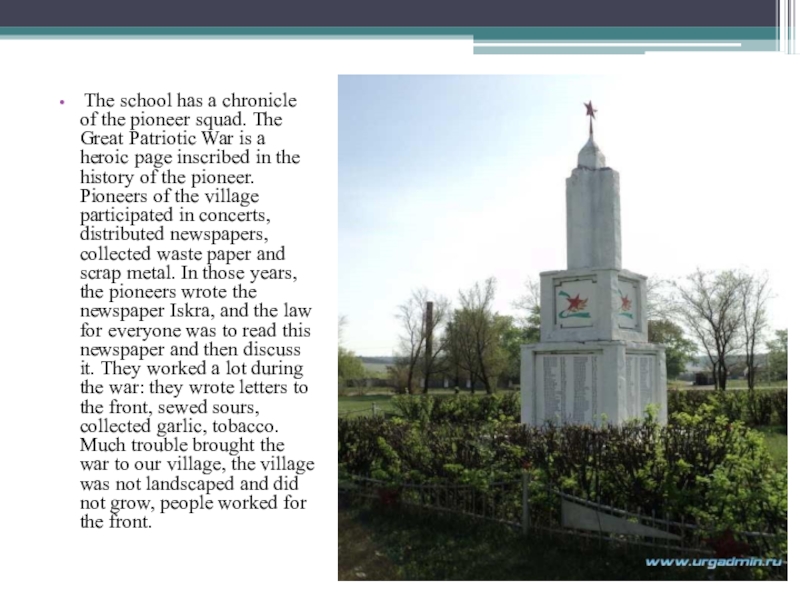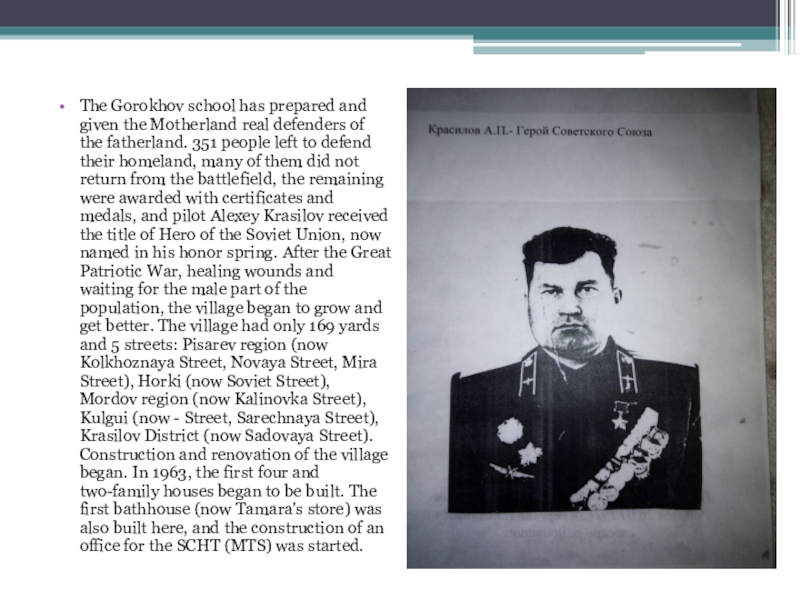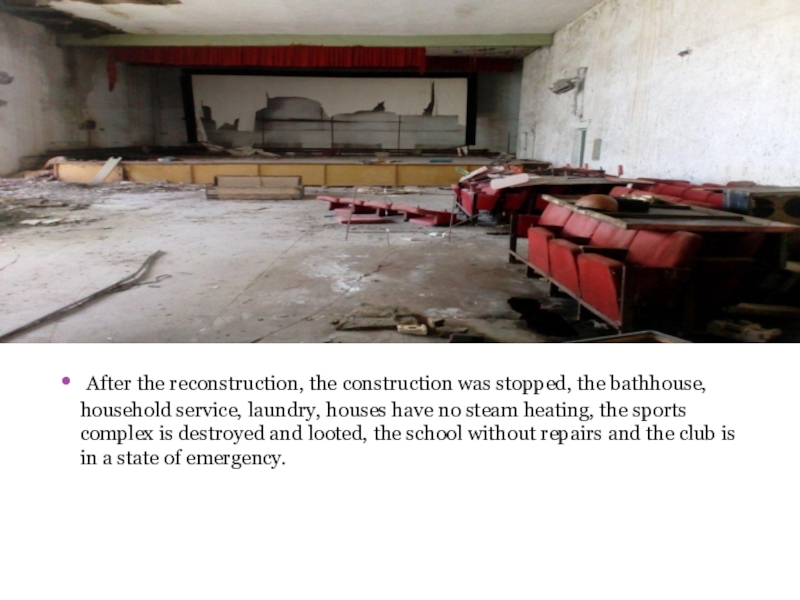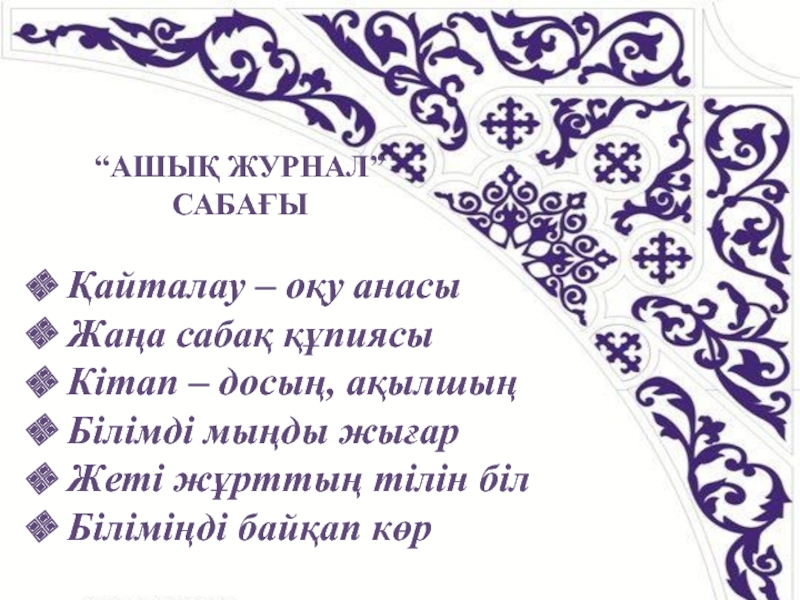SOSH
The teacher: Usoltseva Nadezhda Viktorovna
- Главная
- Разное
- Образование
- Спорт
- Естествознание
- Природоведение
- Религиоведение
- Французский язык
- Черчение
- Английский язык
- Астрономия
- Алгебра
- Биология
- География
- Геометрия
- Детские презентации
- Информатика
- История
- Литература
- Математика
- Музыка
- МХК
- Немецкий язык
- ОБЖ
- Обществознание
- Окружающий мир
- Педагогика
- Русский язык
- Технология
- Физика
- Философия
- Химия
- Шаблоны, фоны, картинки для презентаций
- Экология
- Экономика
Презентация, доклад История села Горохово
Содержание
- 1. Презентация История села Горохово
- 2. My village is Gorokhovo Located in the
- 3. In the picturesque hilly places surrounded by
- 4. The village of Gorokhovo is one
- 5. In the village there was a
- 6. During the Great Patriotic War, the
- 7. The school has a chronicle of
- 8. The Gorokhov school has prepared and given
- 9. At the same time the construction
- 10. There were three heating systems in the
- 11. After the reconstruction, the construction was
My village is Gorokhovo Located in the lowlands, And in it I know All the people Trees and sings. Nature's favorite soul Around the village, A beautiful nap She's surrounded.
Слайд 2My village is Gorokhovo Located in the lowlands, And in it I know All
the people
Trees and sings.
Nature's favorite soul
Around the village,
A beautiful nap
She's surrounded.
Слайд 3In the picturesque hilly places surrounded by pine forest and birch
groves, on both sides of the river Yurgamysh stretches the free village of Gorokhovo, one of the largest and most beautiful villages of the Yurgamysh district.
Слайд 4
The village of Gorokhovo is one of the oldest settlements
in the Yurgamysh district. It was probably formed in the middle of the 18th century, or even before. People began to live it in the middle of the Bronze Age (2,500 years ago). The river changed the channel several times, and settlements were found both near the river and at a distance: the settlement of Chudak was completely excavated in 1946-1947. It was a settlement surrounded by earthen shaft and ditch. He led one main move and two wickets: one to the river, the other to the spring. The room was common to all, but with partitions insideThe cooking hearth and the place of bone accumulation were clearly visible, which indicates that people were already engaged in farming and pastoralism.
Слайд 5
In the village there was a parochial school, a wooden
church, 4 windmills and one water mill.
After the October Revolution in 1917, the village was established Soviet power. In 1918, the city of Chelyabinsk hosted the first peasant congress, which decided on the transfer of land to peasants. The delegate from the village was Stepan Andrjevici. After the congress, a village gathering was held, at which it was decided to divide the land by the number of souls in the village.
After the October Revolution in 1917, the village was established Soviet power. In 1918, the city of Chelyabinsk hosted the first peasant congress, which decided on the transfer of land to peasants. The delegate from the village was Stepan Andrjevici. After the congress, a village gathering was held, at which it was decided to divide the land by the number of souls in the village.
Слайд 6
During the Great Patriotic War, the chairman of the Komsomol
organization was Tulalenov Alexandra Andreevna. Komsomols were on the most difficult sites, during the day worked on the main work, and in the evening helped the collective farm in harvesting, dried seeds, collected ash for fertilizer. For the front knitted and sewed, sent warm things, prepared concerts.
Along with the Komsomol organization, a pioneer organization was formed. The pioneers were accepted from the age of 9. In the 1930s, there were nine men in the squad.
Along with the Komsomol organization, a pioneer organization was formed. The pioneers were accepted from the age of 9. In the 1930s, there were nine men in the squad.
Слайд 7
The school has a chronicle of the pioneer squad. The
Great Patriotic War is a heroic page inscribed in the history of the pioneer. Pioneers of the village participated in concerts, distributed newspapers, collected waste paper and scrap metal. In those years, the pioneers wrote the newspaper Iskra, and the law for everyone was to read this newspaper and then discuss it. They worked a lot during the war: they wrote letters to the front, sewed sours, collected garlic, tobacco. Much trouble brought the war to our village, the village was not landscaped and did not grow, people worked for the front.
Слайд 8
The Gorokhov school has prepared and given the Motherland real defenders
of the fatherland. 351 people left to defend their homeland, many of them did not return from the battlefield, the remaining were awarded with certificates and medals, and pilot Alexey Krasilov received the title of Hero of the Soviet Union, now named in his honor spring. After the Great Patriotic War, healing wounds and waiting for the male part of the population, the village began to grow and get better. The village had only 169 yards and 5 streets: Pisarev region (now Kolkhoznaya Street, Novaya Street, Mira Street), Horki (now Soviet Street), Mordov region (now Kalinovka Street), Kulgui (now - Street, Sarechnaya Street), Krasilov District (now Sadovaya Street). Construction and renovation of the village began. In 1963, the first four and two-family houses began to be built. The first bathhouse (now Tamara's store) was also built here, and the construction of an office for the SCHT (MTS) was started.
Слайд 9 At the same time the construction of the club and
monument to the fallen in World War II began, the opening took place in 1966. The school was built by January 1, 1967, 1978 was laid Victory Park.
Слайд 10
There were three heating systems in the village: the collective farm
"Dawn" - school and kindergarten, SCHT - a working village and a hospital, skh - a working village.
In 1981, we celebrated 200 years of village formation. We built a sports complex with paved paths, a stadium, a hockey court. There was a hockey and football team in the village. In 1985, a laundry was opened. There was a complex reception point where it was possible to pass excess agricultural products, wool, leather, scrap metal and other things. There was also a household service, where a person could make an order for tailoring clothes, shoes, dry cleaning, repair of household appliances; you didn't have to go to the district or regional center.
In 1981, we celebrated 200 years of village formation. We built a sports complex with paved paths, a stadium, a hockey court. There was a hockey and football team in the village. In 1985, a laundry was opened. There was a complex reception point where it was possible to pass excess agricultural products, wool, leather, scrap metal and other things. There was also a household service, where a person could make an order for tailoring clothes, shoes, dry cleaning, repair of household appliances; you didn't have to go to the district or regional center.
Слайд 11
After the reconstruction, the construction was stopped, the bathhouse, household
service, laundry, houses have no steam heating, the sports complex is destroyed and looted, the school without repairs and the club is in a state of emergency.
